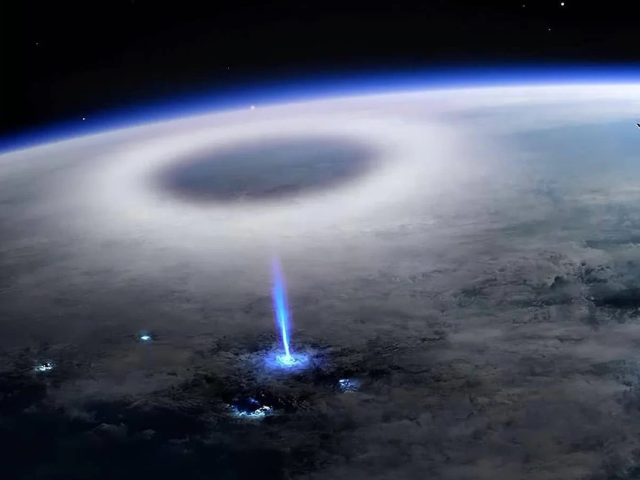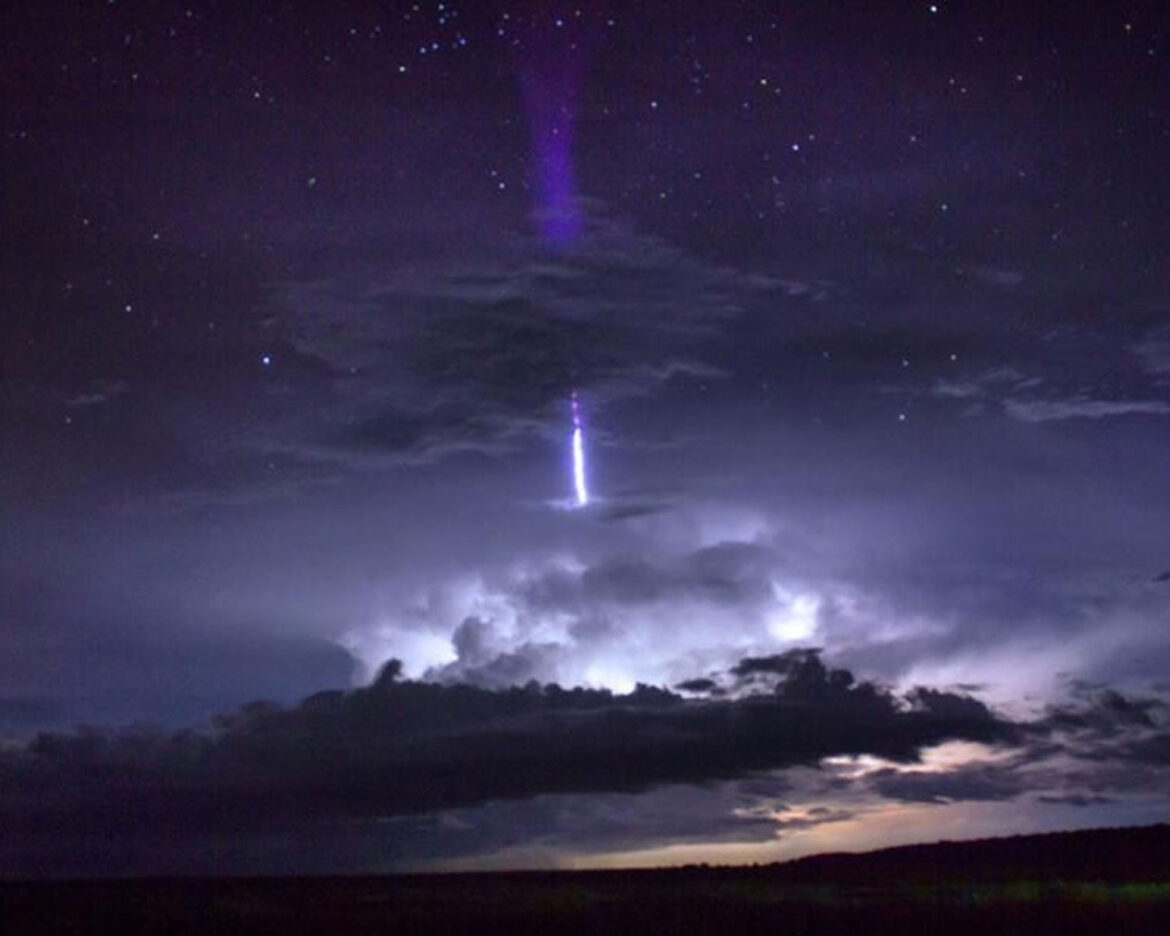A rare atmospheric phenomenon, known as blue jets, has been observed shooting upward from storm clouds into the stratosphere, providing valuable insights into upper atmospheric electrical activity. These lightning-like flashes can extend up to 30 miles into the sky but are challenging to detect from the ground due to their brief duration and the presence of storm clouds.

In 2019, instruments aboard the International Space Station (ISS) captured five blue flashes and a blue jet above a storm near Nauru, a Pacific island nation. These observations contributed to a study published in Nature, improving scientists’ understanding of the origins and behavior of blue jets.
Blue jets occur when the positively charged upper section of a storm cloud interacts with a negatively charged layer above it, resulting in a static electricity discharge in the form of a blue flash. Unlike traditional lightning that strikes between clouds or from clouds to the ground, blue jets ascend into space.
The blue jet recorded near Nauru reached an altitude of 32 miles and lasted only 10 to 20 milliseconds. ISS instruments, including optical cameras, photometers, and a gamma-ray detector, were used to capture this fleeting phenomenon. Alongside the blue jets, ultraviolet flashes called ELVES were also observed, signifying complex electrical activity in the upper atmosphere.
Studying these jets and related occurrences like red sprites is critical, as they can disrupt communication technologies by interfering with radio waves. Additionally, these discharges may affect greenhouse gas concentrations and the Earth’s ozone layer, highlighting the importance of ongoing research.
Scientists, including Victor Pasko from Penn State, stress the need to further explore these high-altitude electrical events to deepen our understanding of their impacts on climate and communication systems. The ISS research offers a unique perspective, advancing knowledge of the intricate electrical processes occurring above storm clouds.



